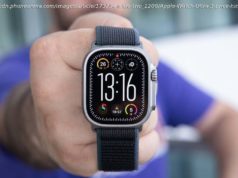The Training Load feature in watchOS 11 and iOS 18 is another Apple Watch health feature letting me down – here’s why.
I’ve been telling you for a while how I’m using technology to improve my well-being. Specifically, I’ve relied on ChatGPT to restart running and completed several half-marathon races before moving on to run actual marathon races. I use the Apple Watch to monitor my health parameters during exercise, races, and at rest and sleep.
I upgraded to the Apple Watch Series 10 from the Apple Watch SE 2 in September, as I needed better battery life and more health data points. The battery life bump was phenomenal and certainly an unexpected Apple Watch Series 10 surprise.
However, I did find a troubling ongoing issue. The Apple Watch Series 10 will routinely fail to record my heart rate during exercise, and I’m not the only one experiencing the problem.
More annoyingly, I discovered recently that the customizable running routines on the Apple Watch Series 10 can fail. I blamed it all on the wearable’s inability to register and record my pulse, though I cannot tell if that’s true.
I didn’t expect to find more issues with the Apple Watch’s ability to track my health and fitness, but I did. It turns out that Training Load, a new health feature that Apple introduced with watchOS 11 and iOS 18, is not registering actual training loads correctly.
That’s a problem if you use the new tools to adjust your training load. Also, if it happened to me, it’ll surely happen to you.
Here’s what my Training Load looks like for the past few weeks, and we’ll focus on the last few days:
Notice that huge drop? You might think I didn’t engage in any training sessions for at least a week. Workouts are down significantly, and so are walking and running activities.






